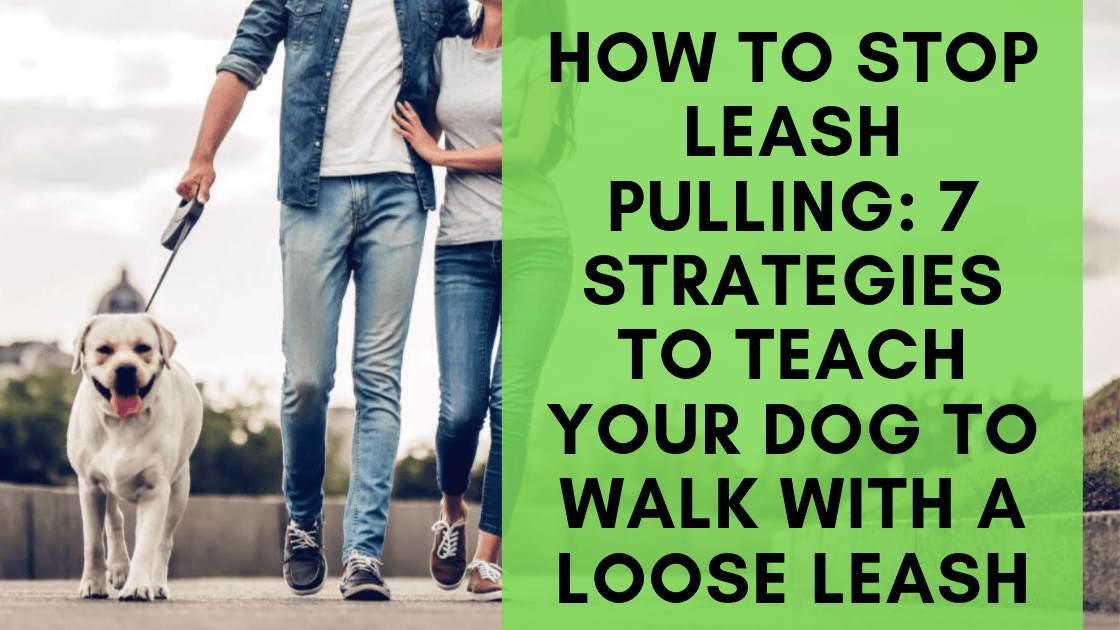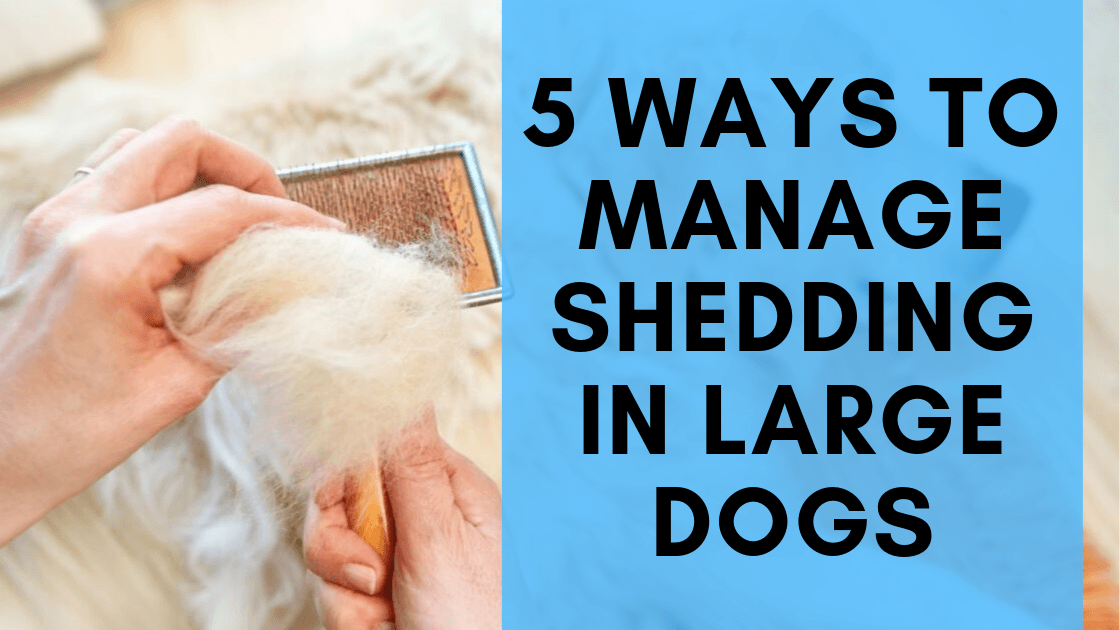When you got your large breed dog, were you picturing lots of long, relaxing walks with your best bud? Walking around town, on a nature trail, or wherever else with a loose leash—an enjoyable experience for all parties?
If you’re here, I’m guessing it looks a little different than that. So often it’s more a question of who’s walking who! With a dog that’s pulling so hard on their leash they’re either choking themselves or you’ve barely got control of them. Or maybe both!
The question is, how can you stop leash pulling in your large breed dog? What strategies can you use to take back the walk and enjoy time with your dog on leash? With some patience, consistency, and the right strategies in place every dog can learn to walk nicely on a loose leash.
Why do dogs pull on the leash?
Many people are under the impression that dogs pull on their leash because they want to be “head of the pack” or establish their dominance. However, most professional trainers and sources says that this is not the case. In reality, your dog just doesn’t know any different.
When on a walk, your dog is excited to be outside and experience all of the sensory input the world has to offer. If they weren’t on a leash, they’d be taking it all in as fast as they want and letting their nose and ears take them in any direction they please. Basically, your dog tries to achieve the same experience on a leash which leads to leash pulling and tension.
Walking with a loose leash is not a natural behavior for your dog, and it probably doesn’t occur to them that it’s bothering you. However, as you probably know, dogs can learn quickly and love to please their owners. Once you start to train them that a loose leash is the desired and expected behavior, they will adjust.
7 Strategies to stop leash pulling in large breed dogs
1. Establish strong base commands and voice control
Unfortunately, training your dog to walk with a loose leash isn’t going to be the kind of thing that happens overnight. To help see results more quickly, you should approach your leash training in an integrated manner
By this, I mean to attempt leash training in conjunction with other basic training and establish good voice control over your dog. It’s important that your dog knows how to cue into your voice and knows that it is “work time”. This is often established by incorporating rewards and maybe a specific leash that your dog will start to associate with work time.
A strong set of basic commands and ability to “be trained”, so to speak, will go a long way in how quickly you see progress with the specific leash training strategies listed below.
2. “Be a Tree” leash training method
This method is very common in teaching your dog to walk with a loose leash. The idea is that forward motion is what your dog wants, so you don’t allow them to have it if there is tension on the leash.
As soon as the leash becomes tight or your dog starts pulling, you stop moving. Likely your dog will continue to pull, but will probably double back to investigate why you’re not moving. At this point, when the leash becomes loose again, take some steps forward.
Repeating this with consistency will feel exhausting, especially on the first few walks, but eventually, your dog will understand that to move forward without stopping they shouldn’t pull.
If your dog isn’t responding to you stopping, another approach can be to stop and actually start walking in the opposite direction to force a loose leash.
3. Use positive reinforcement to promote loose leash walking
Positive reinforcement is always my go-to approach with any type of dog training. You can easily incorporate this into your leash training and the “Be a Tree” method.
Keep some pieces of kibble or very small pieces of dog treats on you during walks and reward your dog for forward motion with a loose leash. Ideally, your dog will be walking next to you instead of in front which makes it easy to reinforce with sporadic treats.
Related reading: Choosing the Healthiest Dog Treats
4. Practice on hip walking when your dog is off leash
If you have a dog that walks well off leash and responds well to voice control, but is terrible on leash (we were guilty of this!), practice on hip walking without a leash first.
Basically, call your dog over and have them sit at your left side, or use the heel command if your dog knows it. Then start moving forward. Encourage them to walk right next to you by feeding treats every 20-30 seconds at first. Choose a word or phrases to associate with this type of walking on hip. I say, “walk with me”. Slowly, you’ll give treats more sporadically.
Once your dog can walk well on hip without a leash, try adding a leash and using the “Be a Tree” method to continue your training.
5. Stay engaged with your dog throughout the walk
When you are working on leash training with your dog it is important to stay engaged and consistent. The second you tolerate any leash pulling, you are sending the message that it’s okay. In the beginning, this will feel challenging, but it will get easier quickly!
6. Exercise your dog before a leash training session
Because leash training is going to feel like work for your dog, and because you won’t exactly be moving at an aerobic pace (especially in the beginning) you’ll need to find other ways to exercise your dog.
Beginning a leash training walk with a well-exercised dog is going to make your training so much more successful! I really can’t emphasize this enough. Hopefully, you can find a dog park or field to play fetch or run your dog off leash before a leash training session.
With time, you’ll be able to use on-leash walks for exercise again. But just think about it for a second. If your dog has been at home all day alone and you set out on a walk to work on loose leash walking, it’s not going to go well. They will be excited and ready to expend pent up energy with some serious pulling if this is what they’re used to.
7. Keep your training sessions short and realistic
Remember not to overwhelm your dog by teaching too much at once, or having practice sessions that are too long. I’ll never forget the day our 6-month old lab threw what I can only describe as a temper tantrum when we went a little over board on training sessions. Too much, too fast can really backfire. Keep leash training sessions fun, positive, and short at first.
Get your dog walking with a loose leash today!
Are you ready to take back your walk? You can stop leash pulling, one of the most common dog behavior problems, easily with the tips in this article.
Remember to keep practice sessions short, try to exercise your dog before training, “Be a Tree”, and utilize positive reinforcement.
A little frustration at first will quickly give way to enjoyable walks off leash with your beloved furry friend 😊
Other popular behavior related articles:



